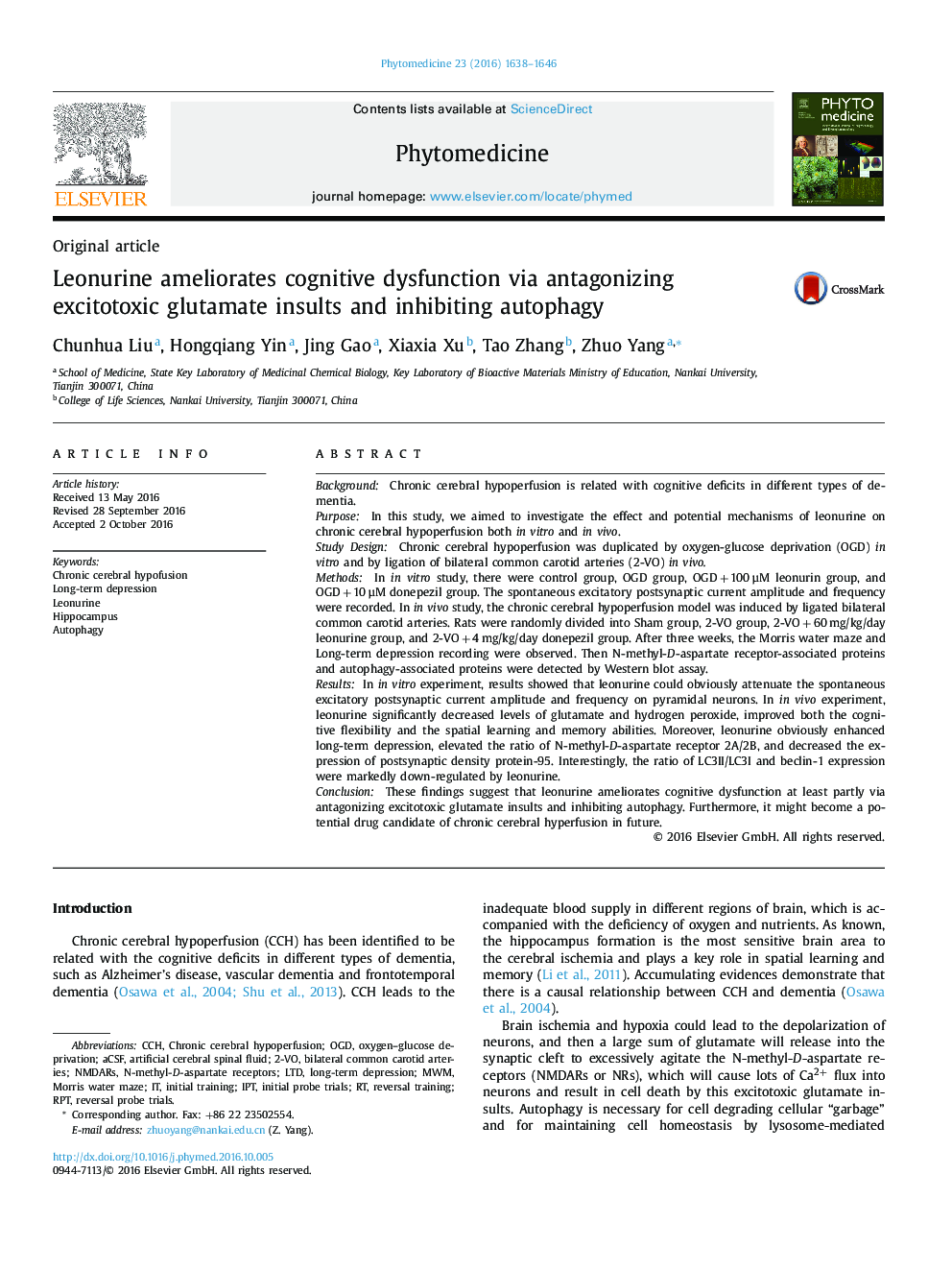| Article ID | Journal | Published Year | Pages | File Type |
|---|---|---|---|---|
| 5549456 | Phytomedicine | 2016 | 9 Pages |
BackgroundChronic cerebral hypoperfusion is related with cognitive deficits in different types of dementia.PurposeIn this study, we aimed to investigate the effect and potential mechanisms of leonurine on chronic cerebral hypoperfusion both in vitro and in vivo.Study DesignChronic cerebral hypoperfusion was duplicated by oxygen-glucose deprivation (OGD) in vitro and by ligation of bilateral common carotid arteries (2-VO) in vivo.MethodsIn in vitro study, there were control group, OGD group, OGD +â100 µM leonurin group, and OGD +â10 µM donepezil group. The spontaneous excitatory postsynaptic current amplitude and frequency were recorded. In in vivo study, the chronic cerebral hypoperfusion model was induced by ligated bilateral common carotid arteries. Rats were randomly divided into Sham group, 2-VO group, 2-VO +â60 mg/kg/day leonurine group, and 2-VO +â4 mg/kg/day donepezil group. After three weeks, the Morris water maze and Long-term depression recording were observed. Then N-methyl-D-aspartate receptor-associated proteins and autophagy-associated proteins were detected by Western blot assay.ResultsIn in vitro experiment, results showed that leonurine could obviously attenuate the spontaneous excitatory postsynaptic current amplitude and frequency on pyramidal neurons. In in vivo experiment, leonurine significantly decreased levels of glutamate and hydrogen peroxide, improved both the cognitive flexibility and the spatial learning and memory abilities. Moreover, leonurine obviously enhanced long-term depression, elevated the ratio of N-methyl-D-aspartate receptor 2A/2B, and decreased the expression of postsynaptic density protein-95. Interestingly, the ratio of LC3II/LC3I and beclin-1 expression were markedly down-regulated by leonurine.ConclusionThese findings suggest that leonurine ameliorates cognitive dysfunction at least partly via antagonizing excitotoxic glutamate insults and inhibiting autophagy. Furthermore, it might become a potential drug candidate of chronic cerebral hyperfusion in future.
Graphical abstractDownload high-res image (133KB)Download full-size image
